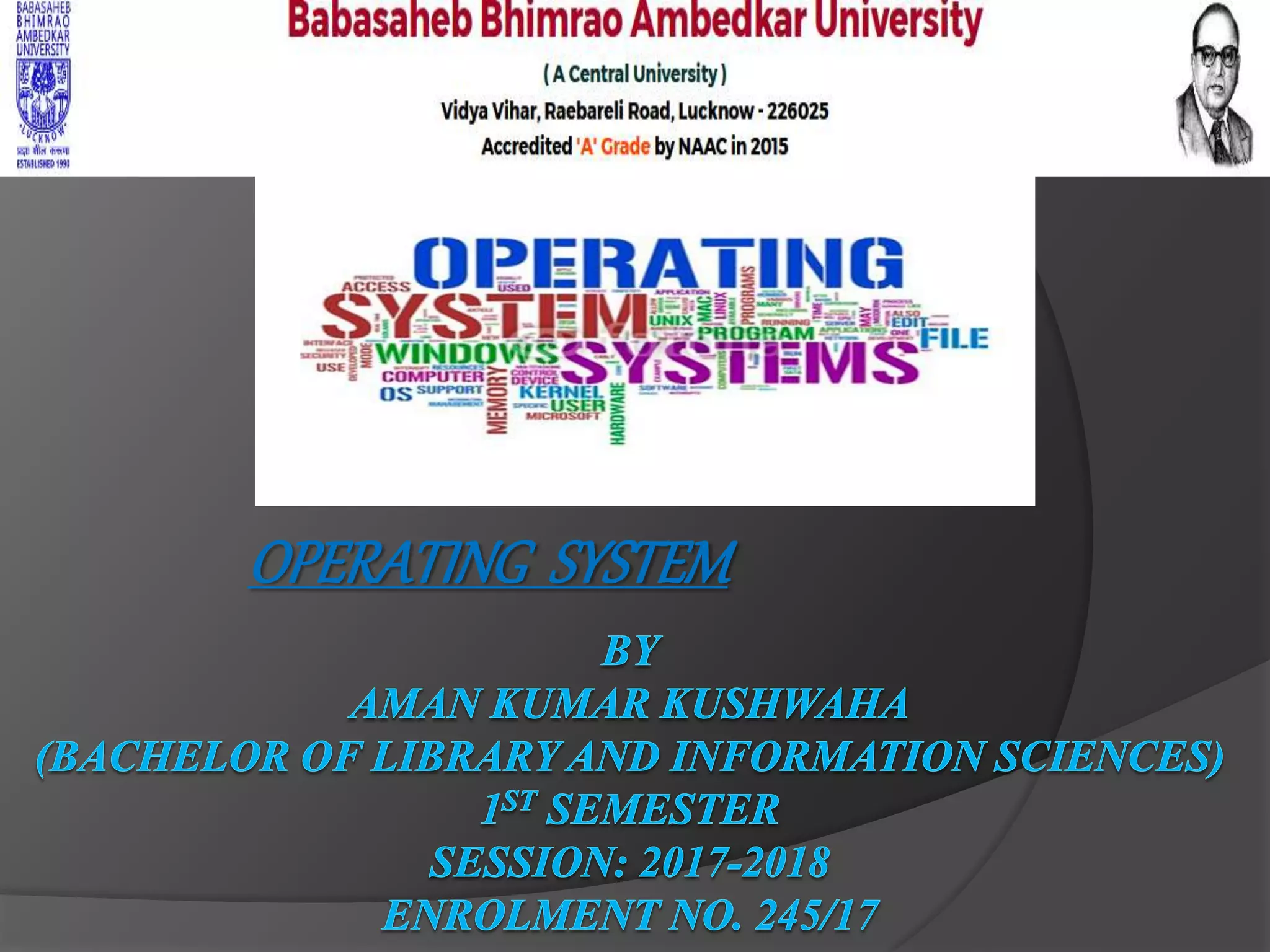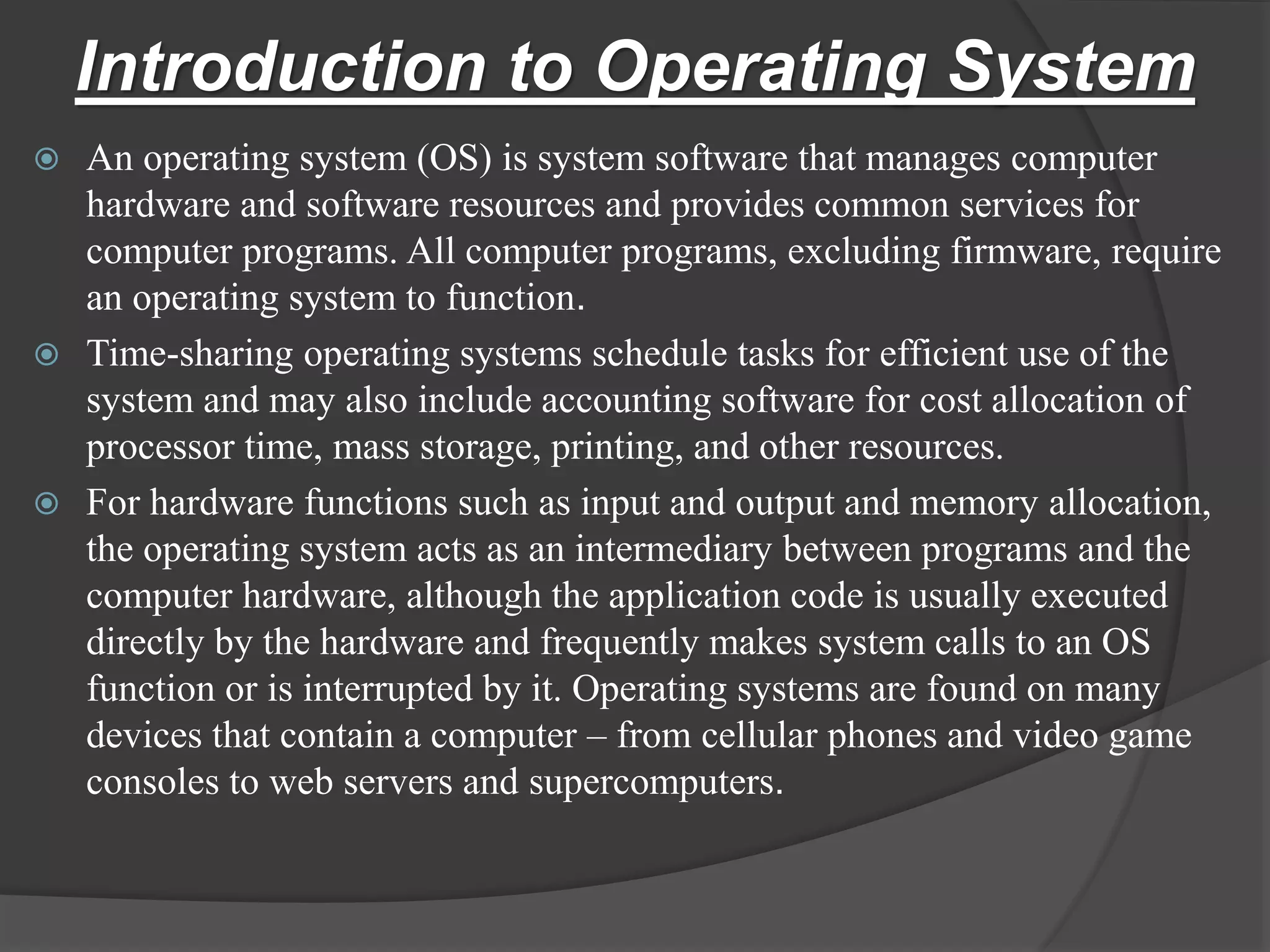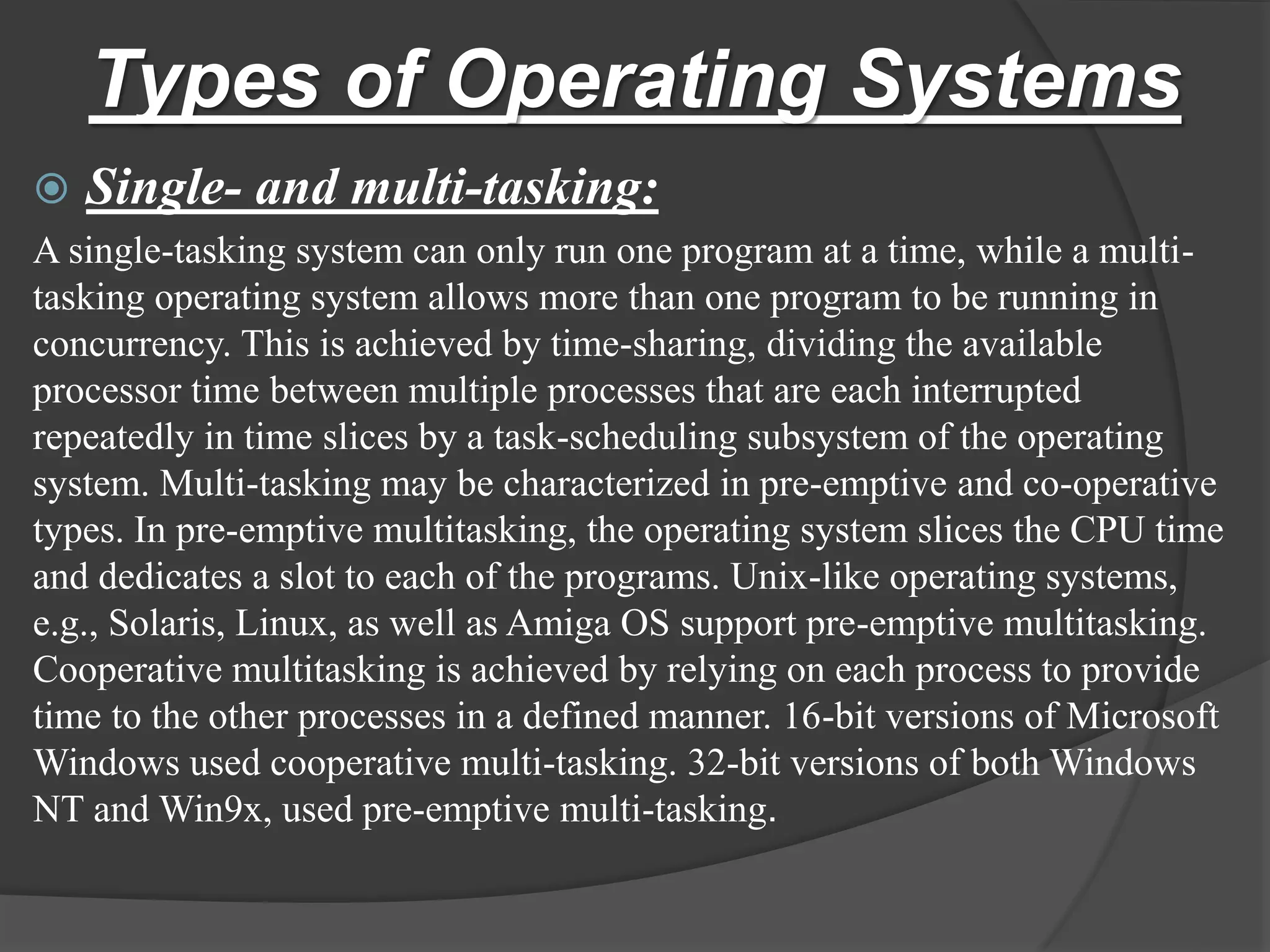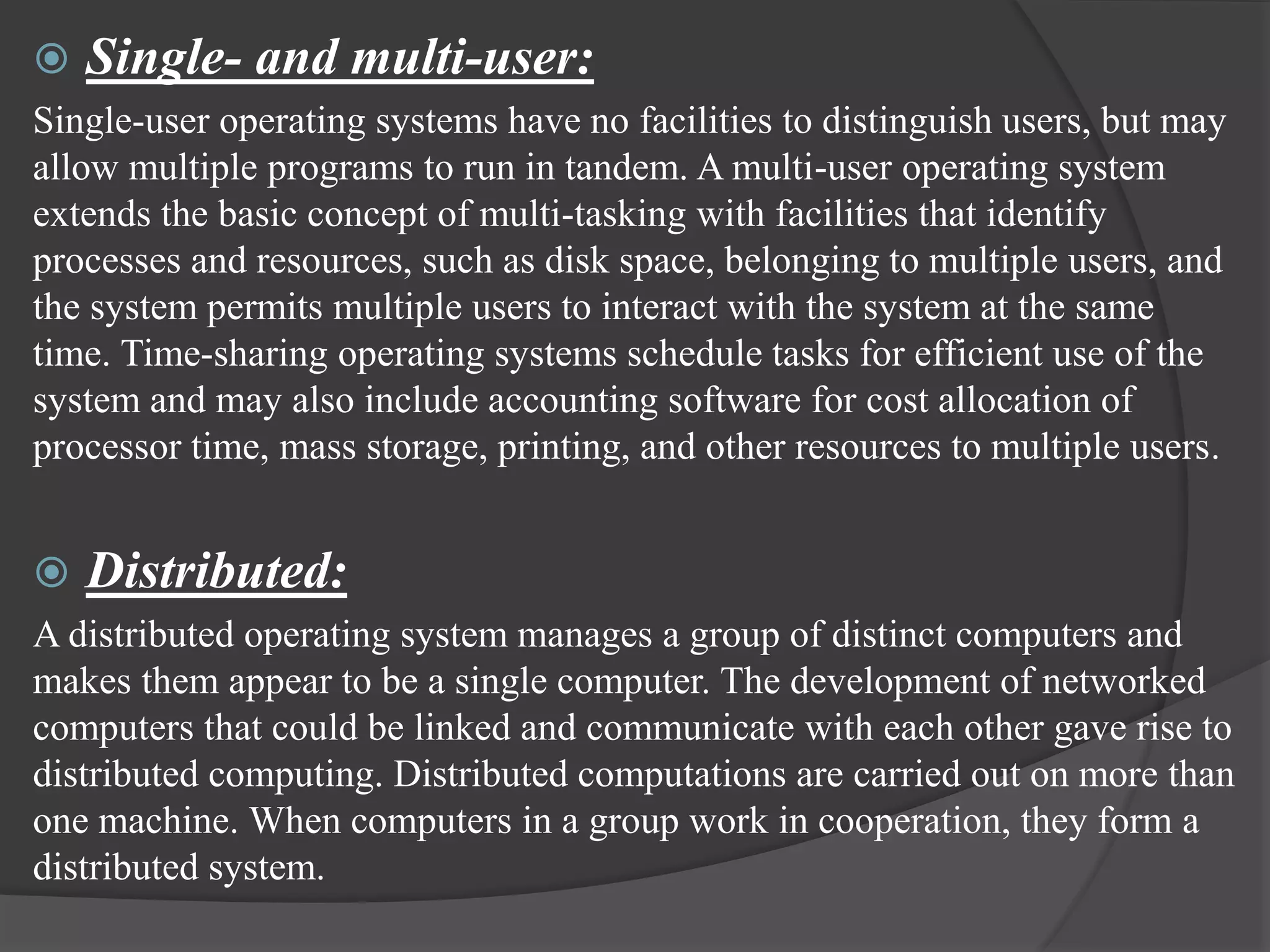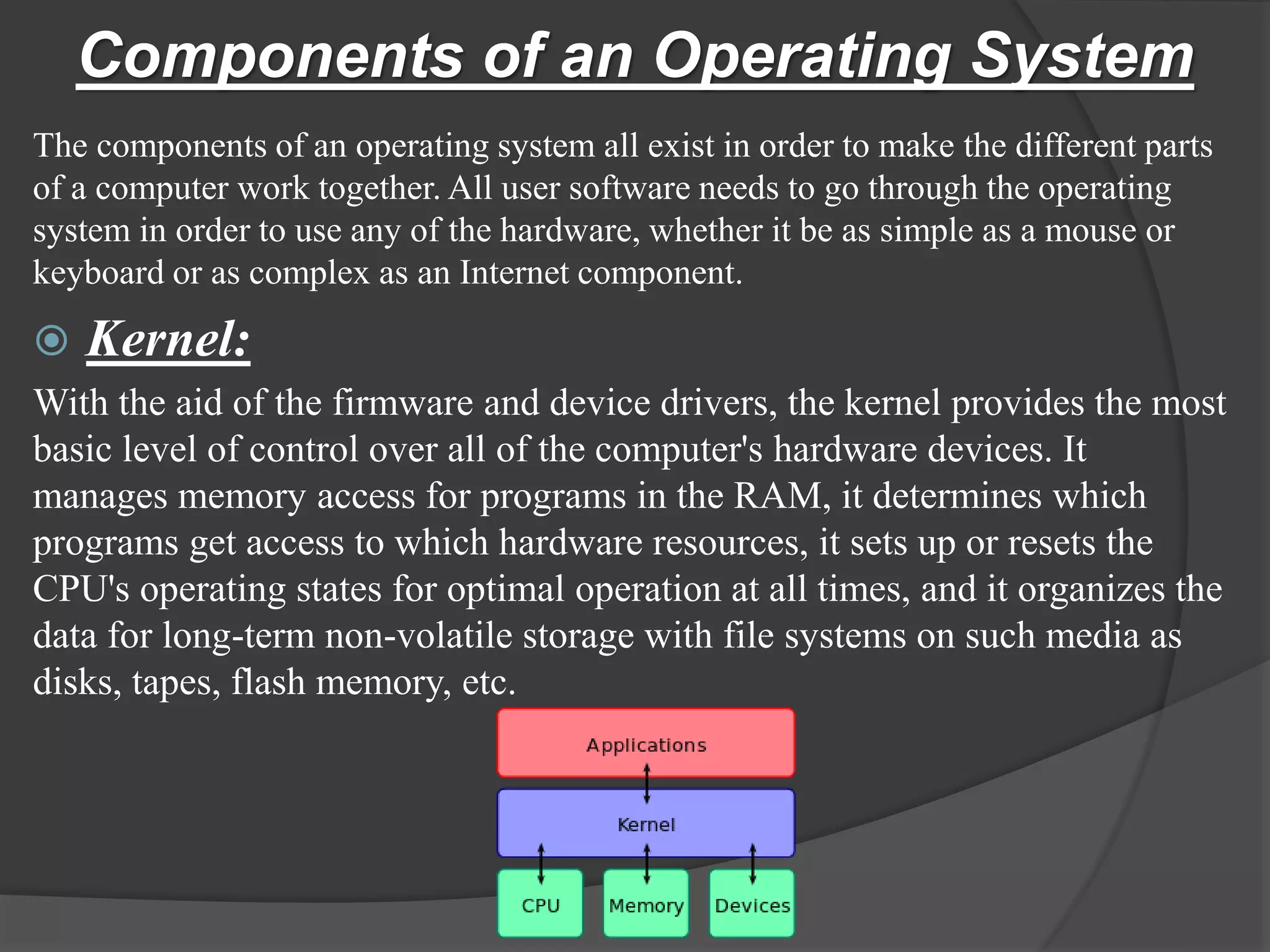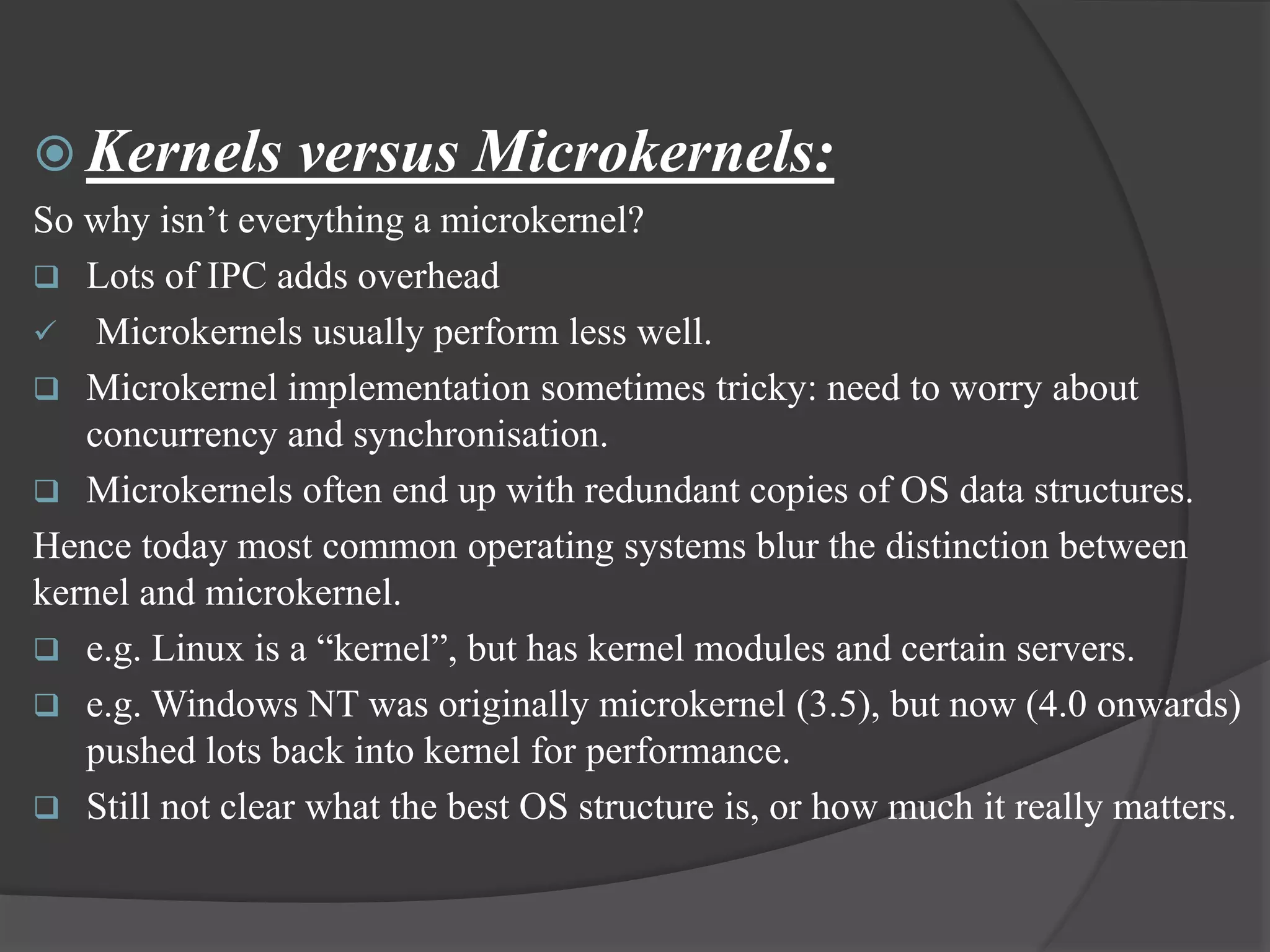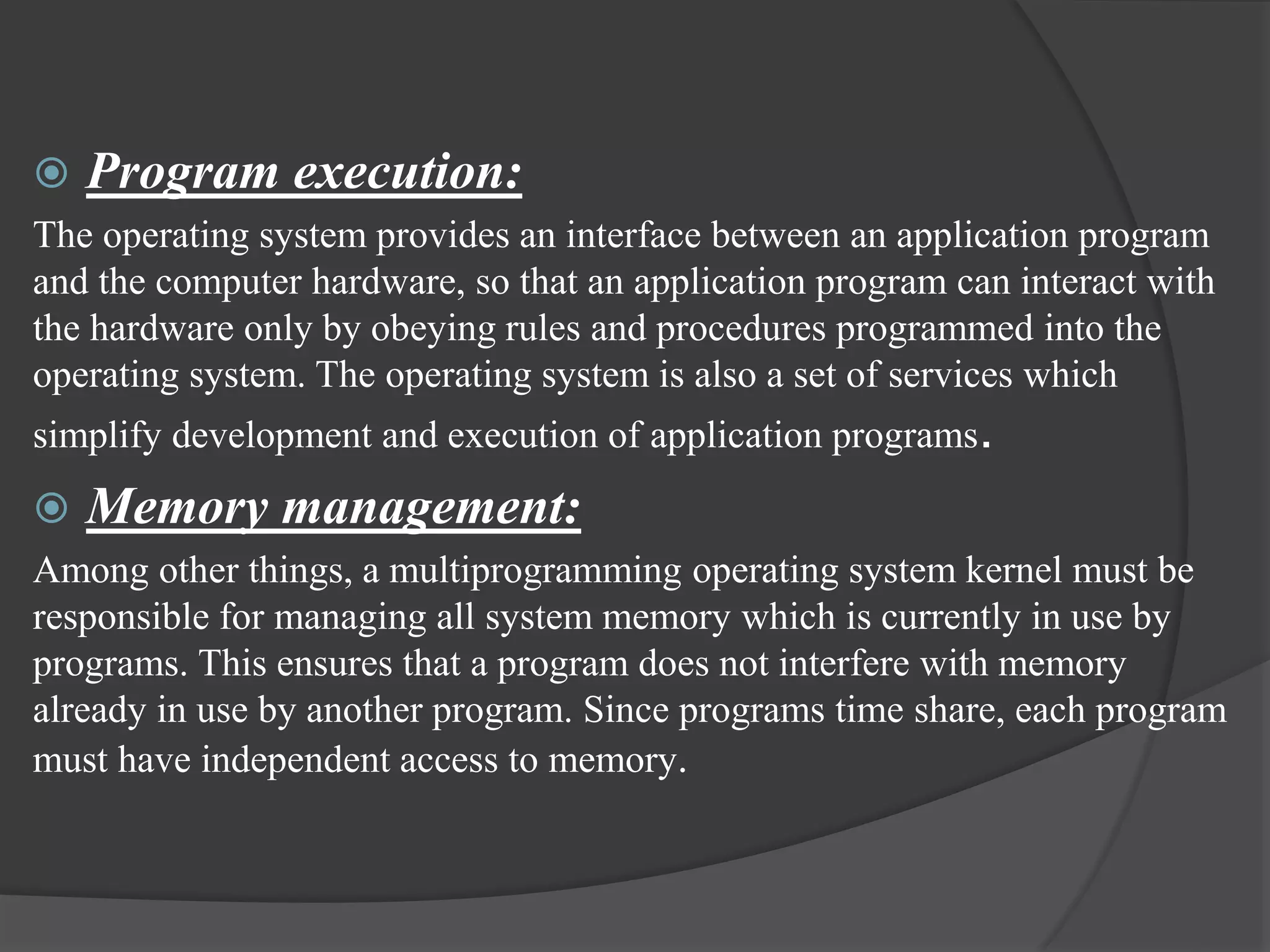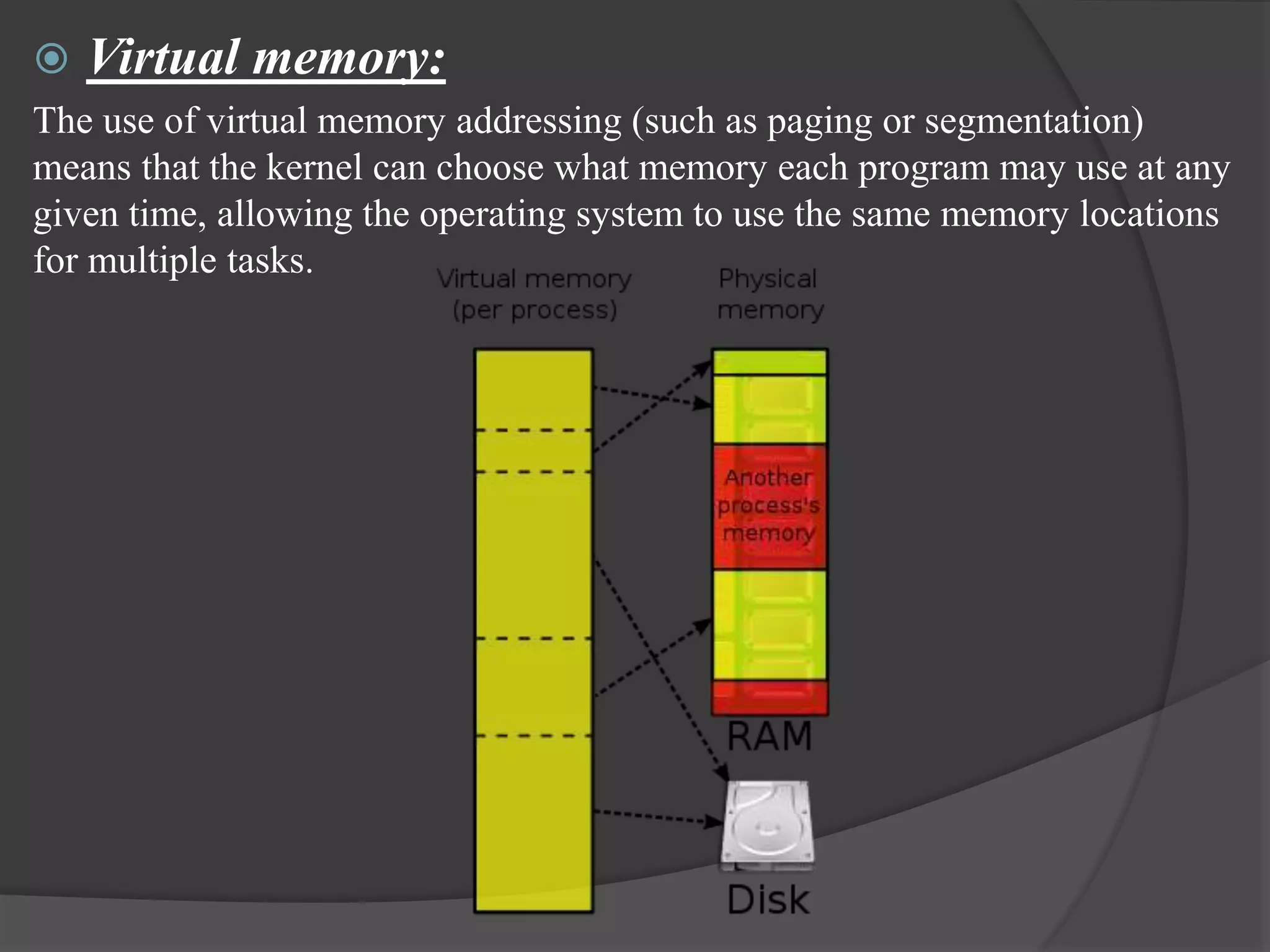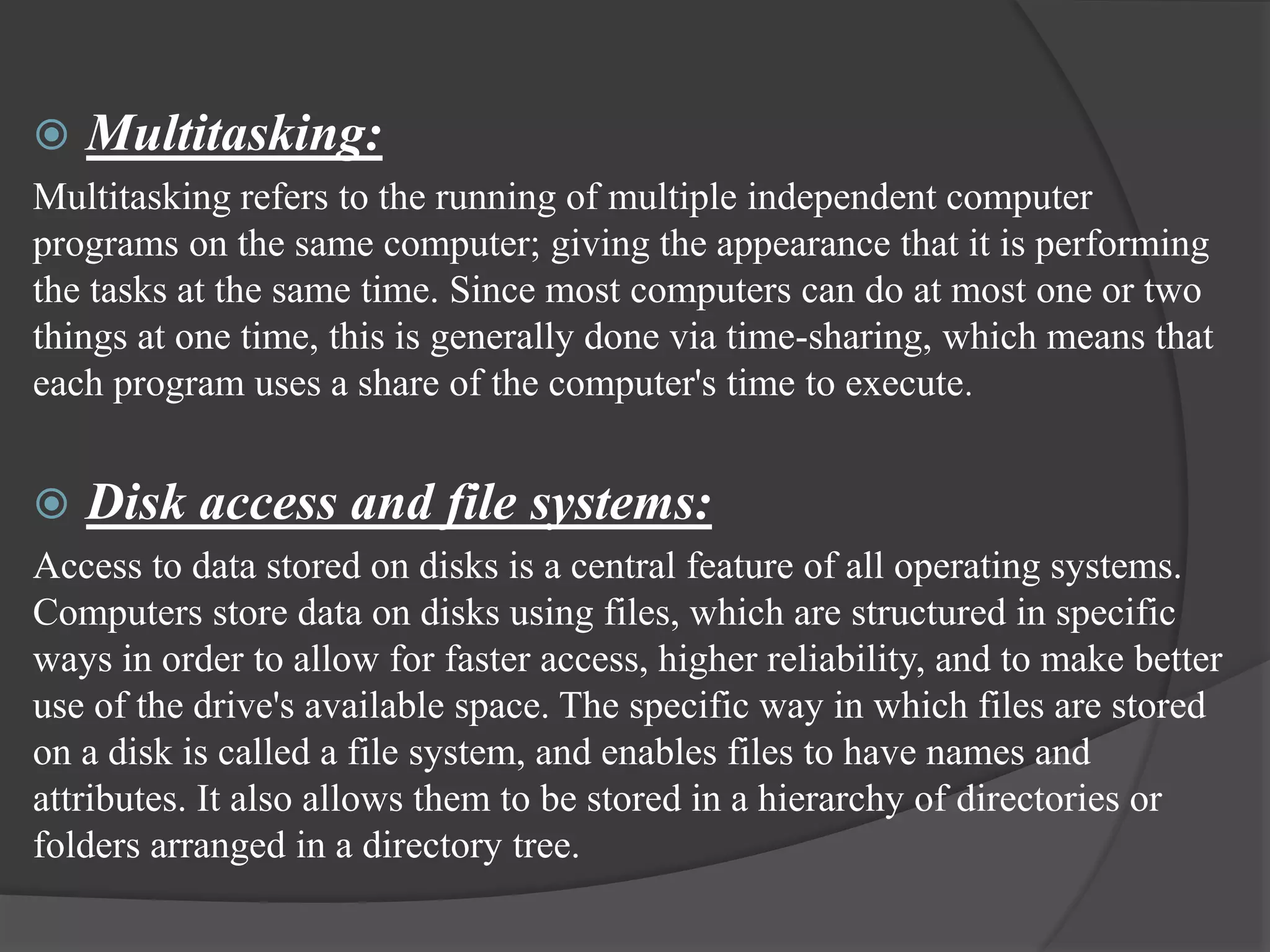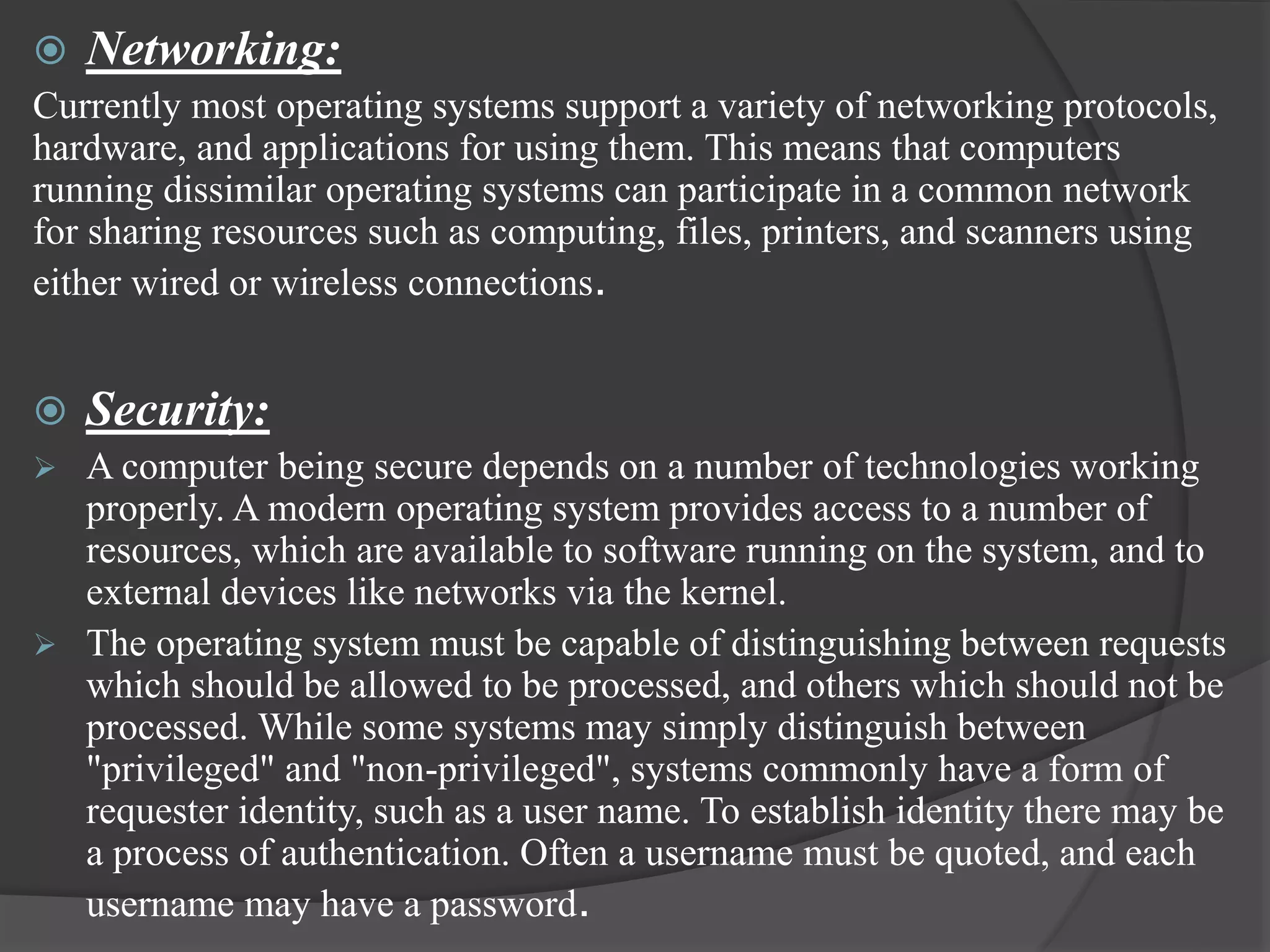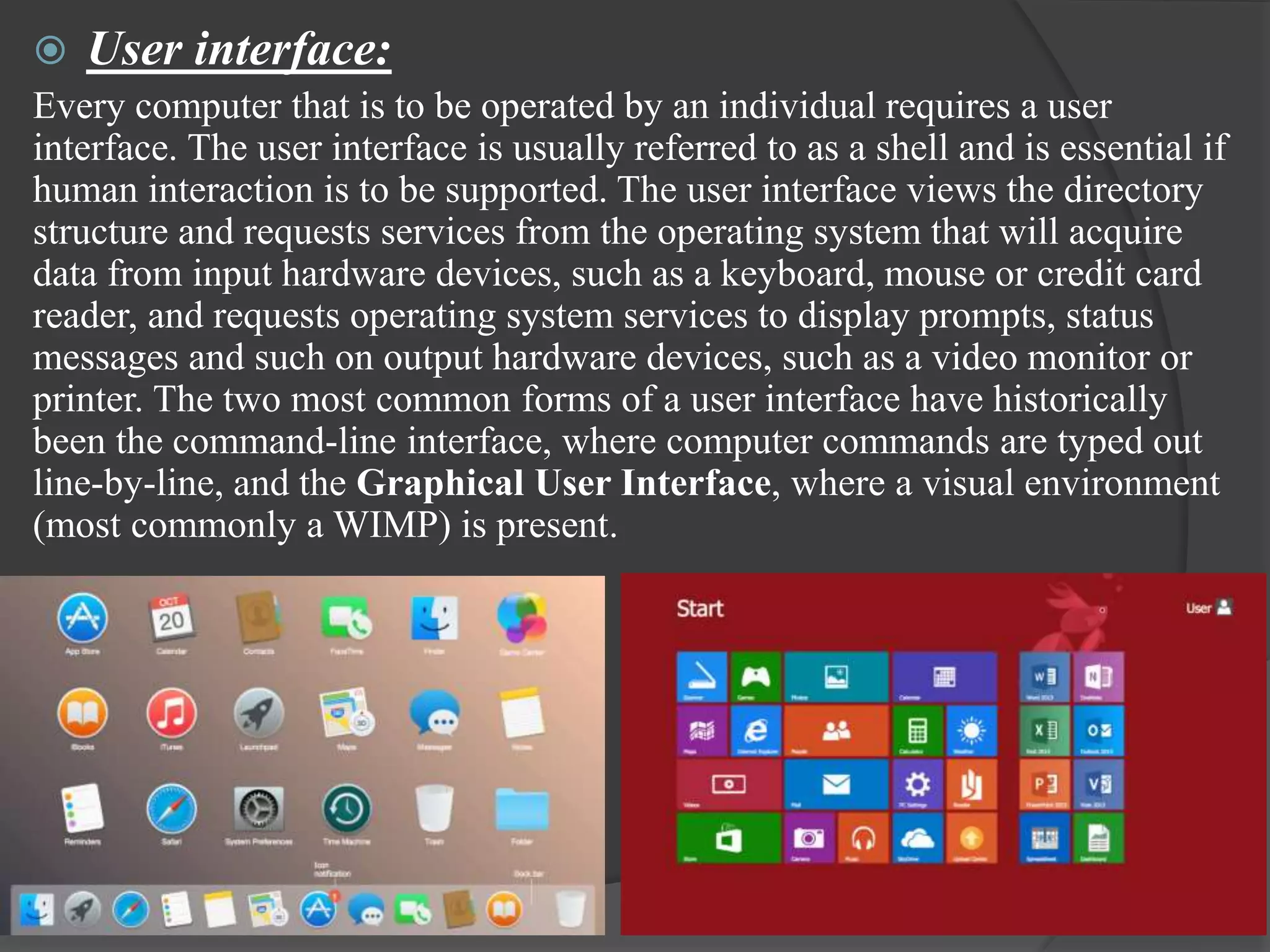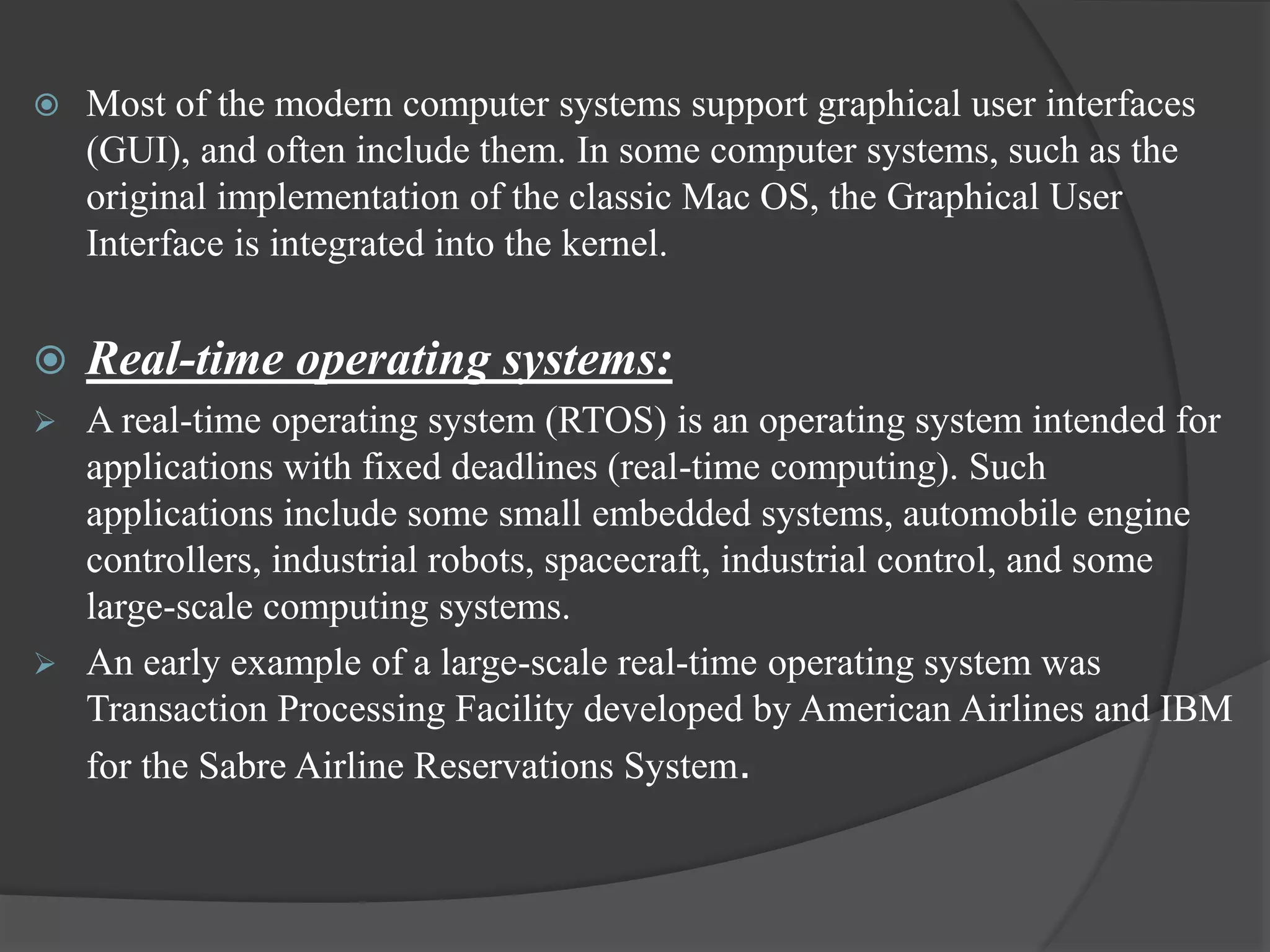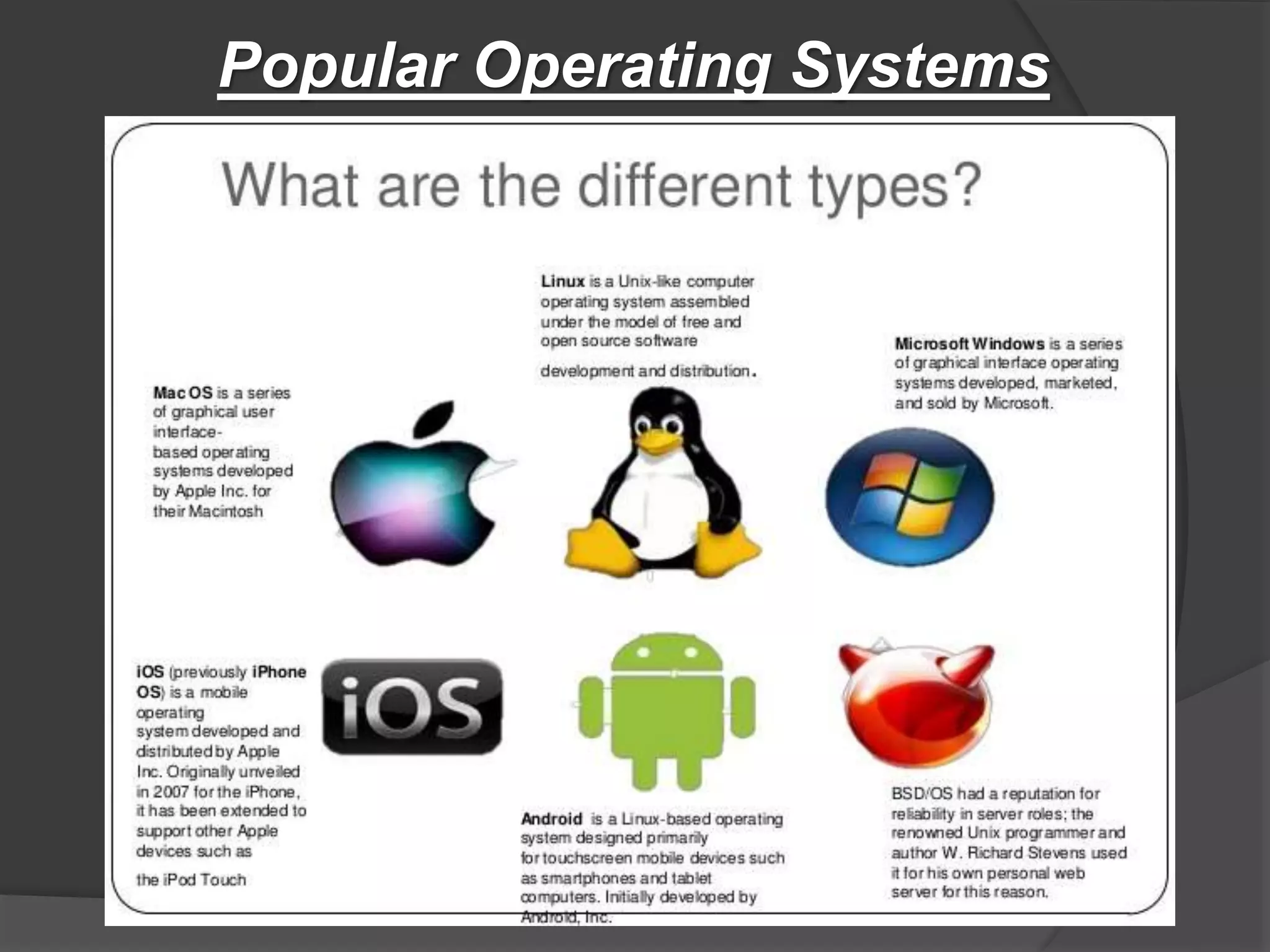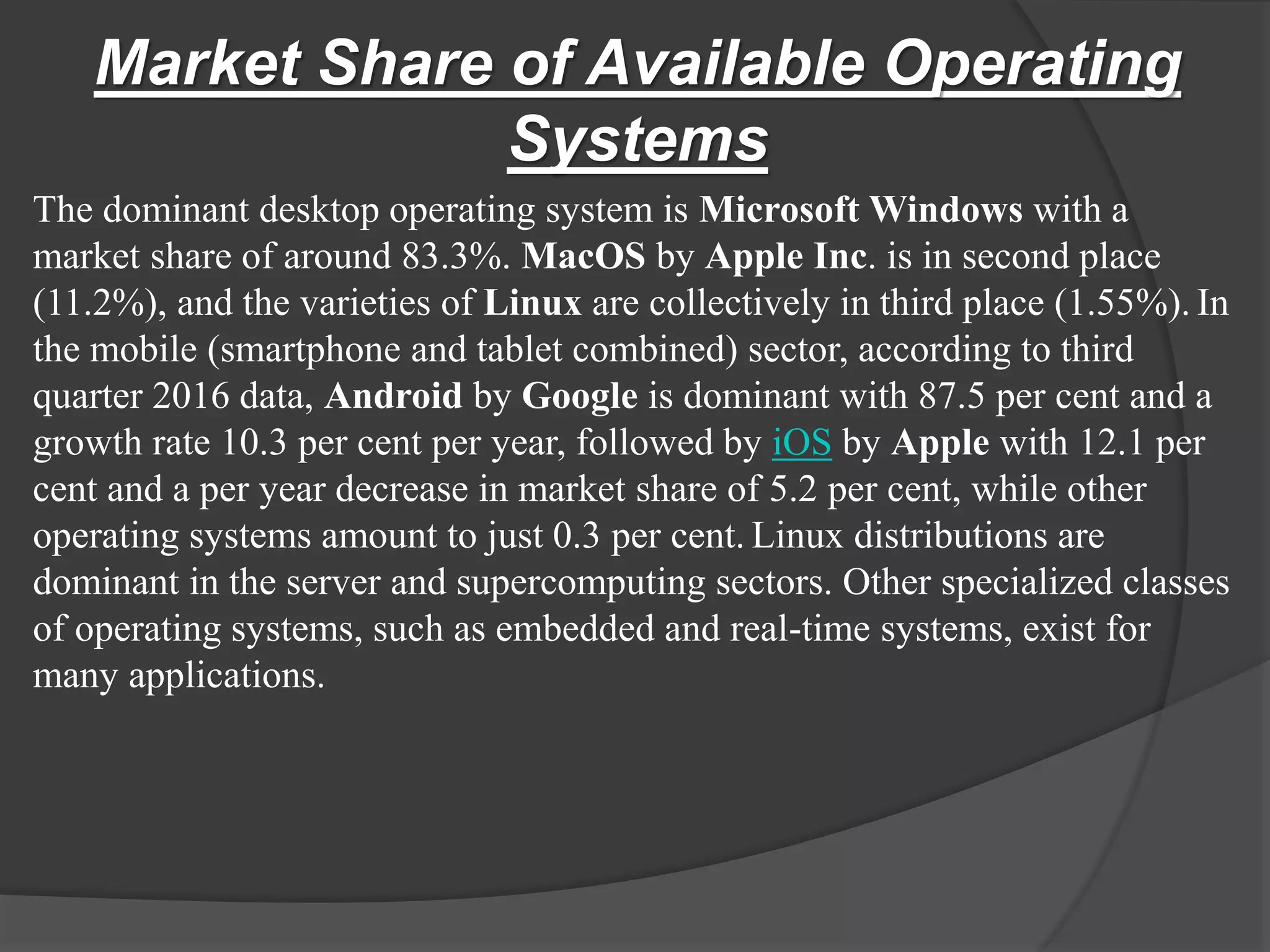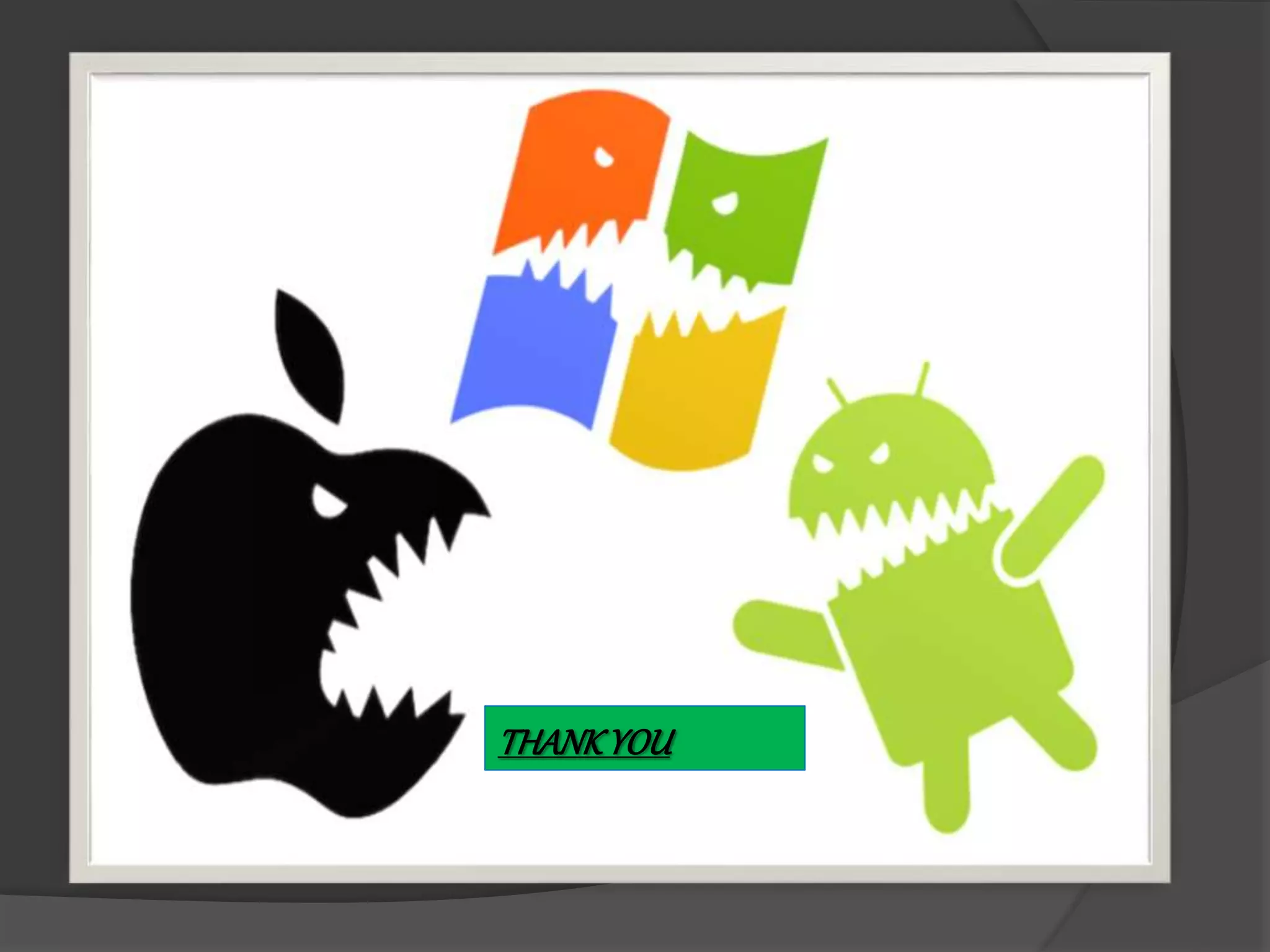An operating system (OS) is system software that manages computer hardware and software resources and provides common services for computer programs. The OS acts as an intermediary between programs and computer hardware. There are several types of operating systems including single-tasking/multi-tasking, single-user/multi-user, distributed, embedded, real-time, and library operating systems. Popular components of an OS include the kernel, program execution, memory management, virtual memory, multitasking, disk access/file systems, device drivers, networking, security, and user interface. Common operating systems include Windows, MacOS, Android, iOS, and various Linux distributions which dominate different market sectors.
